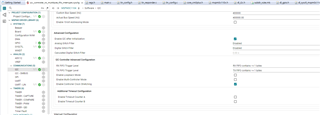Other Parts Discussed in Thread: MSPM0G3507
Tool/software:
Hi experts,
We are trying to use LIN communication (uart0) in slave mode and I2C communication in master controller mode at the same time using mspm0c1104. If we use both at the same time, one side does not work due to interrupt priority. Is there a way to use both at the same time?
(We implemented each using Lin and I2C with example code, and each works fine individually.)





